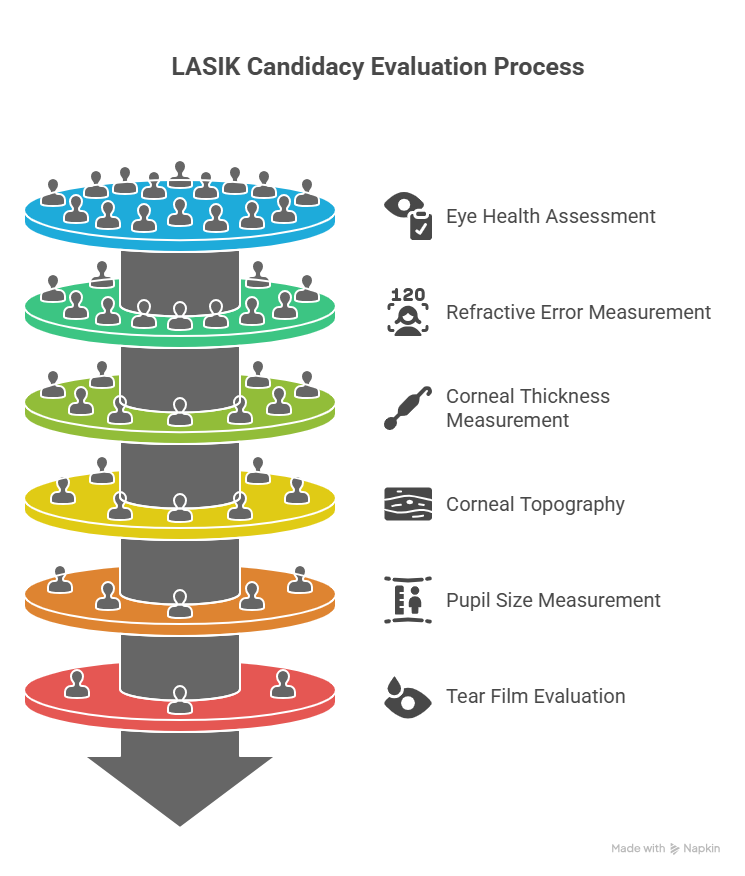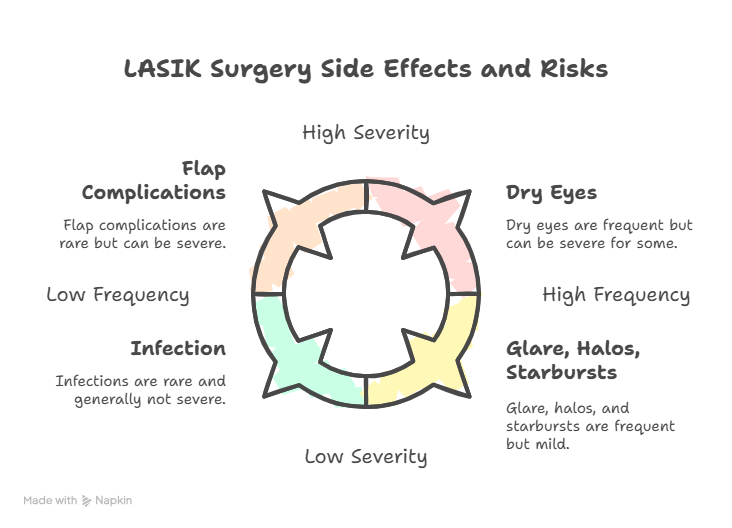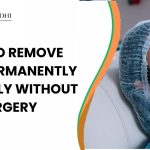|
Getting your Trinity Audio player ready...
|
Have you ever dreamt of waking up and seeing the world clearly without fumbling for your glasses or struggling with contact lenses? For millions of people worldwide, this dream has become a vibrant reality, thanks to a remarkable advancement in vision correction known as LASIK surgery. The daily routine of cleaning contacts, dealing with dry eyes, or pushing up slipping spectacles can be tiresome, even restrictive. Imagine the freedom to swim, play sports, travel, or simply enjoy a rainy day without the constant worry of your vision aids.
This aspiration is precisely what What is Lasik Surgery aims to fulfill. It’s a highly sophisticated and widely performed procedure that has revolutionized how we correct common refractive errors. Far from a mere cosmetic procedure, it’s a precise medical intervention that reshapes the eye’s primary focusing surface, opening up a world of visual clarity and convenience. Today, we’re going to embark on a detailed exploration of What is Lasik Surgery and its benefits, delving into its mechanisms, the step-by-step procedures, who makes an ideal candidate, and the incredible advantages it offers. At Indira Gandhi Eye Hospitals, we are committed to providing cutting-edge LASIK technology and expertise, helping our patients achieve optimal vision and a life of newfound freedom.
Understanding Your Vision: A Quick Primer on Refractive Errors
To truly grasp What is Lasik Surgery, it’s helpful to understand how your eye works and what goes wrong in common vision problems. Your eye is a marvel of natural engineering. Light enters through the cornea (the clear, dome-shaped front window of your eye), then passes through the pupil and the lens. Both the cornea and the lens work together to bend (refract) light rays, focusing them precisely onto the retina at the back of your eye. The retina then converts these light rays into electrical signals, which are sent to the brain to form the images you see.
In an eye with perfect vision, light focuses directly on the retina. However, in many people, the shape of the eye or the cornea isn’t quite right, causing light to focus either in front of or behind the retina. These are known as refractive errors, and they lead to blurry vision. LASIK is designed to correct these errors:
- Myopia (Nearsightedness): This occurs when the eyeball is too long or the cornea is too steeply curved, causing light to focus in front of the retina. Distant objects appear blurry, while near objects are clear.
- Hyperopia (Farsightedness): This happens when the eyeball is too short or the cornea is too flat, causing light to focus behind the retina. Near objects appear blurry, and sometimes distant objects too.
- Astigmatism: This is caused by an irregularly shaped cornea or lens, resembling a football rather than a perfect sphere. This results in light focusing at multiple points on the retina, leading to distorted or blurry vision at all distances.
Thinking about LASIK surgery?
Clear vision without glasses or contact lenses is possible. Our experts provide safe and advanced LASIK treatment. Take the first step towards better vision today.
Book LASIK ConsultationDecoding LASIK: What is Lasik Surgery? The Precision Behind the Vision
What is Lasik Surgery at its core? It stands for Laser-Assisted In Situ Keratomileusis. Essentially, it’s a sophisticated outpatient surgical procedure that uses a highly precise excimer laser to permanently reshape the cornea, thereby correcting refractive errors and allowing light to focus correctly on the retina. The procedure is quick, typically taking only minutes per eye, and generally involves minimal discomfort.
The journey to clearer vision with LASIK begins long before the actual surgery, with a crucial pre-operative evaluation.
The Indispensable Pre-Operative Assessment: Ensuring You’re the Right Candidate
Before anyone can undergo What is Lasik Surgery, a thorough eye examination is performed by an ophthalmologist. This assessment is absolutely critical to determine if you are a suitable candidate and to customize the treatment plan. It typically includes:

- Detailed Eye Health Exam: To rule out any underlying eye diseases (like glaucoma, cataracts, or severe dry eye syndrome) that could affect the outcome.
- Measurement of Refractive Error: Precise measurement of your myopia, hyperopia, and astigmatism. Your prescription must have been stable for at least one year.
- Corneal Thickness Measurement (Pachymetry): Essential to ensure you have enough corneal tissue to safely create a flap and perform the reshaping.
- Corneal Topography and Tomography: Advanced imaging techniques that create a detailed map of your cornea’s unique shape and curvature, helping to identify irregularities and guide the laser.
- Pupil Size Measurement: Important, especially in low light, as large pupils can sometimes be associated with increased glare or halos after surgery.
- Tear Film Evaluation: To assess for dry eye syndrome, as LASIK can temporarily worsen dryness.
- Discussion of Expectations and Risks: A candid conversation about what you can realistically expect from the surgery and a thorough review of potential side effects and complications.
Only after this meticulous evaluation, if all criteria are met, will a patient be considered a candidate for What is Lasik Surgery.
The LASIK Procedure Step-by-Step: Precision in Motion
Once deemed suitable, the actual What is Lasik Surgery procedure is remarkably quick and precise. Here’s a general overview of the steps involved:
- Preparation and Anesthesia:
- Upon arriving at the surgical suite, you’ll be made comfortable.
- Anesthetic eye drops are applied to numb the eye surface, so you won’t feel any pain during the procedure.
- An eyelid speculum is used to gently hold your eyelids open and prevent blinking. You’ll be asked to focus on a target light.
- Creating the Corneal Flap: This is the defining initial step of LASIK. A thin, hinged flap is created on the surface of the cornea. There are two primary ways this is done:
- Microkeratome (Bladed LASIK): This traditional method uses a highly precise oscillating blade (microkeratome) to create the flap.
- Femtosecond Laser (Bladeless LASIK / Femto-LASIK / All-Laser LASIK): This is the more advanced and increasingly preferred method. A femtosecond laser creates microscopic bubbles just below the corneal surface, precisely outlining the flap. This “bladeless” approach offers unparalleled precision, creating a flap with highly predictable thickness and dimensions, often leading to a stronger, more stable flap and potentially a reduced risk of certain complications. Most modern LASIK centers, including Indira Gandhi Eye Hospitals, now predominantly offer bladeless LASIK due to its enhanced safety profile and superior outcomes.
- Once created, the surgeon gently lifts and folds back this hinged flap, exposing the underlying corneal tissue (stroma).
- Reshaping the Cornea with the Excimer Laser:
- This is where the magic happens. A highly sophisticated excimer laser is used to precisely remove microscopic amounts of corneal tissue, effectively reshaping the cornea’s curvature to correct your refractive error.
- The laser uses a “cold” ultraviolet light beam, meaning it doesn’t generate heat, preventing damage to surrounding tissues.
- The laser’s pulses are precisely controlled by a computer, guided by the measurements taken during your pre-operative assessment.
- Custom LASIK (Wavefront-Guided or Topography-Guided): This advanced form of LASIK takes personalized treatment to the next level. Instead of correcting just standard refractive errors (like conventional LASIK), it creates a unique, highly detailed “map” of your eye’s specific optical imperfections (called higher-order aberrations). The laser then delivers a completely customized treatment profile, leading to potentially sharper vision, better contrast sensitivity, and reduced night vision disturbances like glare and halos compared to conventional LASIK. Topography-guided LASIK, another advanced form, uses a highly detailed map of the corneal surface to guide the laser, which can be particularly beneficial for eyes with irregular corneas.
- The laser treatment itself typically takes only a few seconds to a minute or two, depending on the degree of correction needed.
- Repositioning the Flap:
- Once the laser reshaping is complete, the surgeon gently folds the corneal flap back into its original position.
- The flap adheres naturally within minutes without the need for sutures, acting as a natural bandage.
- Post-Procedure:
- Your eye will be checked, and you’ll receive post-operative instructions and eye drops (antibiotics to prevent infection, steroids to reduce inflammation).
- You’ll wear a protective shield or glasses, and it’s essential to rest your eyes immediately.
The entire LASIK procedure for both eyes typically takes less than 30 minutes, with the laser application time being very brief.
Thinking about LASIK surgery?
Clear vision without glasses or contact lenses is possible. Our experts provide safe and advanced LASIK treatment. Take the first step towards better vision today.
Book LASIK ConsultationThe Rewards: Benefits of LASIK Surgery
The appeal of What is Lasik Surgery and its benefits is immense, offering a life-altering transformation for many:
- Freedom from Glasses and Contact Lenses: This is, for most, the biggest draw. Imagine waking up with clear vision, swimming without worry, playing sports unhindered, or simply stepping out into the rain without blurry vision. This liberation significantly enhances daily convenience and spontaneity.
- Improved Quality of Life: Beyond practicalities, the psychological and emotional benefits are profound. Enhanced confidence, greater self-reliance, and the ability to participate in activities that were previously challenging with corrective lenses contribute significantly to a better quality of life.
- Rapid Visual Recovery: One of the most remarkable aspects of LASIK is the speed of visual improvement. Many patients experience significantly clearer vision within 24-48 hours after the procedure, with continued improvement over the following weeks.
- Excellent Visual Acuity: A large majority of LASIK patients achieve 20/20 vision or better. For many, the sharpness and clarity of vision after LASIK, especially with custom treatment, can exceed what they experienced even with glasses or contacts, particularly in terms of contrast sensitivity and night vision.
- Long-Lasting Results: For individuals with stable prescriptions who are good candidates, the results of LASIK are generally long-lasting. The corneal shape is permanently altered. While natural aging processes like presbyopia (farsightedness due to aging, typically after 40) will still occur, LASIK corrects the underlying refractive error.
- Cost-Effectiveness Over Time: While the initial investment in LASIK might seem substantial, when weighed against the recurring costs of eyeglasses, contact lenses, solutions, and annual eye exams over many years, LASIK often proves to be a more economical long-term solution.
Are You a Candidate? Determining Eligibility for LASIK
While the benefits are compelling, not everyone is an ideal candidate for What is Lasik Surgery. Strict candidacy criteria are in place to ensure patient safety and optimal outcomes.
Ideal Candidates Typically Have:
- Stable Vision: Your eye prescription should have been stable for at least one year.
- Age: Generally, 18 years or older, as vision tends to stabilize by this age.
- Healthy Eyes: No active eye diseases (like severe dry eye, glaucoma, cataracts, or corneal infections).
- Adequate Corneal Thickness: Sufficient corneal tissue is crucial for safe flap creation and laser ablation.
- Realistic Expectations: An understanding of the potential benefits, risks, and limitations of the procedure.
- Good General Health: No systemic conditions that could impair healing.
Conditions That May Disqualify or Require Caution:
- Unstable Prescription: If your vision is still changing.
- Thin Corneas: Insufficient tissue for safe reshaping.
- Severe Dry Eye Syndrome: LASIK can temporarily worsen dryness; pre-treatment or alternative procedures might be necessary.
- Large Pupils: May increase risk of night vision symptoms (though less common with custom LASIK).
- Active Eye Diseases: Glaucoma, advanced cataracts, herpes simplex keratitis, or other corneal diseases.
- Certain Systemic Health Conditions: Autoimmune diseases (e.g., lupus, rheumatoid arthritis), uncontrolled diabetes, or conditions that affect wound healing.
- Pregnancy or Nursing: Hormonal fluctuations can cause temporary vision changes.
- Very High Refractive Errors: May be better suited for alternative procedures like PRK or implantable collamer lenses (ICLs).
For those not suitable for LASIK, alternative vision correction procedures like PRK (Photorefractive Keratectomy) or ICL (Implantable Collamer Lens) may be excellent options, offering similar benefits without the need for corneal flap creation.
Thinking about LASIK surgery?
Clear vision without glasses or contact lenses is possible. Our experts provide safe and advanced LASIK treatment. Take the first step towards better vision today.
Book LASIK ConsultationPotential Side Effects and Risks: A Balanced Perspective

While What is Lasik Surgery is considered very safe and effective, it’s essential to be aware of potential side effects and risks, though most are temporary or rare, especially with modern techniques.
- Dry Eyes: This is the most common side effect. LASIK can temporarily affect nerve endings in the cornea that stimulate tear production. Most cases resolve within a few months, but some may experience persistent dryness requiring eye drops.
- Glare, Halos, and Starbursts: Patients may experience these, especially at night, often around bright lights. With modern laser technology and custom treatments, the incidence and severity of these symptoms have significantly decreased compared to older LASIK versions, but they can still occur, usually resolving over time.
- Undercorrection or Overcorrection: The eye may be slightly under-corrected or over-corrected, meaning you might still need mild glasses for some activities or a follow-up “enhancement” procedure.
- Flap Complications: Rare with femtosecond laser technology, these can include irregular flaps or displacement.
- Infection: Extremely rare, but possible like any surgery.
- Vision Regression: In rare cases, vision may regress slightly over time, requiring glasses or an enhancement.
The vast majority of patients achieve excellent vision and are highly satisfied with their LASIK results. A thorough pre-operative assessment and an experienced surgical team greatly minimize these risks.
Choosing Your LASIK Partner: The Importance of Expertise
Deciding to undergo What is Lasik Surgery is a significant personal choice, and selecting the right surgeon and clinic is paramount. Look for a board-certified ophthalmologist, has extensive experience in refractive surgery and stays updated with the latest advancements in technology and techniques. A reputable clinic will prioritize comprehensive pre-operative screening, transparently discuss all aspects of the procedure, and provide thorough post-operative care.
Your Vision, Our Priority: Expert Care at Indira Gandhi Eye Hospitals
What is Lasik Surgery has changed the lives of millions, offering liberation from the everyday constraints of glasses and contact lenses. It’s a testament to the incredible advancements in ophthalmology, providing not just clearer vision but a renewed sense of freedom and confidence. If you’re tired of living life through corrective lenses and are curious about whether LASIK could be your path to a clearer world, now is the time to explore your options.
At Indira Gandhi Eye Hospitals, we pride ourselves on being at the forefront of refractive surgery, offering advanced What is Lasik Surgery technologies, including bladeless (Femto-LASIK) and custom (Wavefront-guided) procedures. Our team of highly skilled and experienced corneal and refractive surgeons is dedicated to providing personalized care, from meticulous pre-operative evaluations to compassionate post-operative support. We understand the significance of this decision and are committed to ensuring the highest standards of safety, precision, and patient satisfaction, helping you achieve the best possible visual outcomes.
For a comprehensive consultation to determine if you are a candidate for LASIK and to discuss how this transformative procedure can benefit you, we invite you to connect with us. Visit our website at https://indiragandhiehospital.com/ to learn more and schedule your appointment. Let Indira Gandhi Eye Hospitals be your partner in seeing the world with newfound clarity.
Thinking about LASIK surgery?
Clear vision without glasses or contact lenses is possible. Our experts provide safe and advanced LASIK treatment. Take the first step towards better vision today.
Book LASIK ConsultationFrequently Asked Questions (FAQs)
Is LASIK Surgery painful?
No, What is Lasik Surgery is generally not painful. Anesthetic eye drops are used to numb the eye surface, so you will feel no pain during the procedure itself, although you might experience a sensation of pressure. Any mild discomfort afterward can usually be managed with over-the-counter pain relievers.
How quickly will my vision improve after LASIK?
Most patients experience significant visual improvement within 24 to 48 hours after What is Lasik Surgery. While your vision will continue to stabilize and refine over the following weeks to months, many people can see enough to resume most daily activities very quickly.
Is everyone a candidate for LASIK Surgery?
No, not everyone is a candidate for What is Lasik Surgery. Eligibility depends on factors like age (usually 18+), stable prescription, corneal thickness, overall eye health, and the absence of certain medical conditions. A thorough pre-operative evaluation by an ophthalmologist is essential to determine suitability.
How long do the effects of LASIK last?
For individuals with stable prescriptions and who are good candidates, the corneal reshaping achieved by What is Lasik Surgery is permanent. While LASIK corrects refractive errors, it does not prevent age-related vision changes like presbyopia (farsightedness that develops after age 40).
What are the most common side effects of LASIK?
The most common side effects of What is Lasik Surgery are temporary dry eyes, and sometimes temporary experiences of glare, halos, or starbursts, especially at night. These typically improve over time as the eyes heal, though some individuals may experience persistent dry eye.
What if I’m not a candidate for LASIK? Are there alternatives?
Yes, if you’re not suitable for what Lasik Surgery is, other effective vision correction procedures exist. These include Photorefractive Keratectomy (PRK), which doesn’t create a flap, or Implantable Collamer Lenses (ICL), which are tiny lenses surgically placed inside the eye, offering solutions for a wider range of prescriptions.












